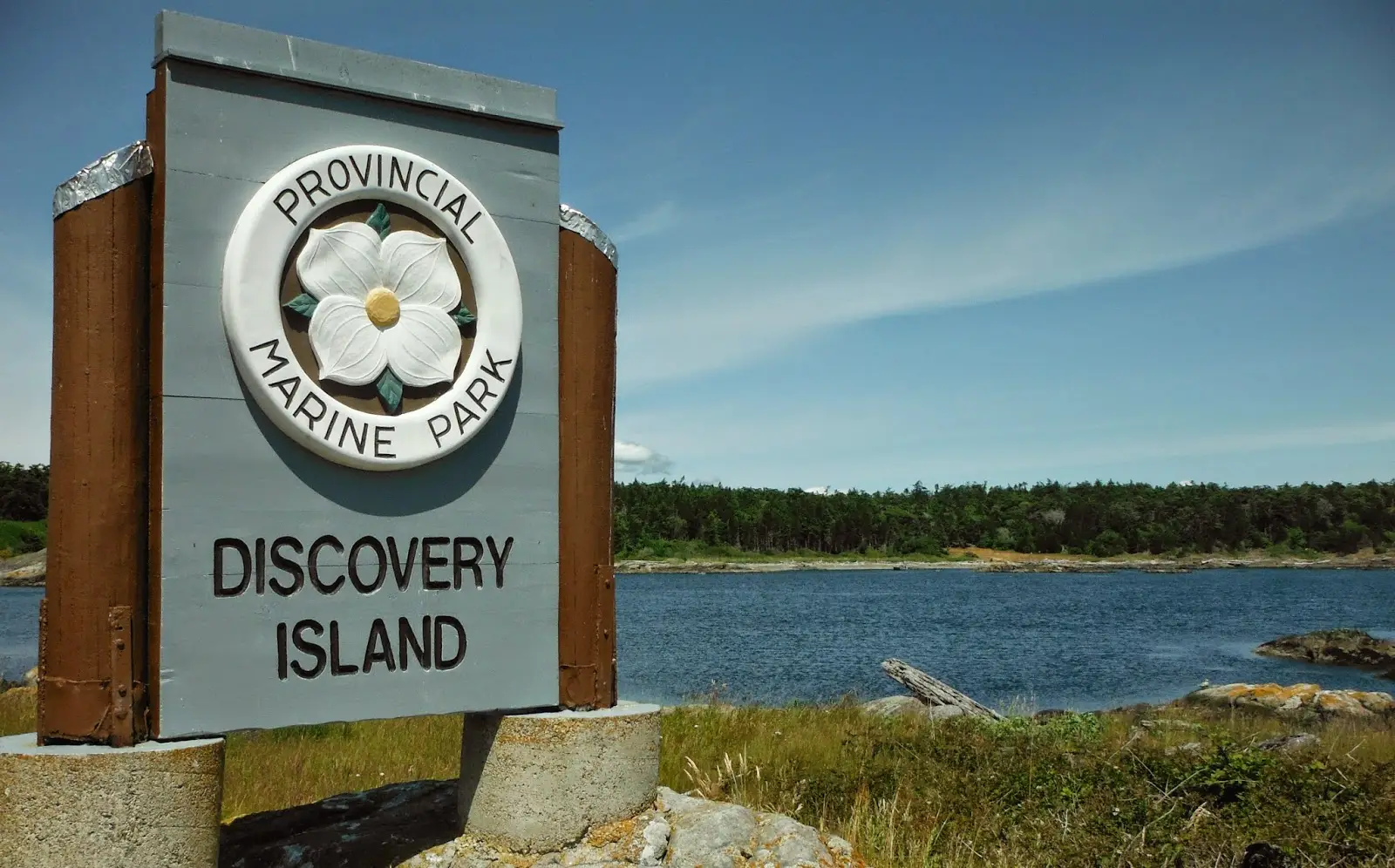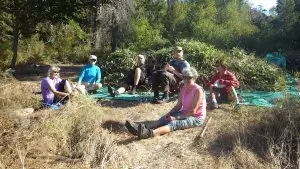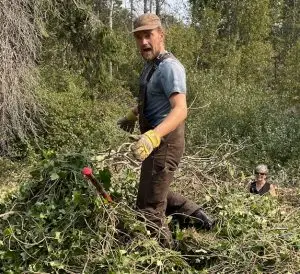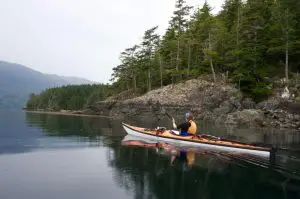The Chatham and Discovery Islands, located just a kilometre across Baynes Channel from Oak Bay and even closer to Saanich’s Ten Mile Point, are a magical and cherished destination for kayakers. These stunning islands, characterized by wind-swept trees and a unique native ecosystem (despite the challenges posed by Himalayan Black Berry, Scotch broom and English ivy invasions), are renowned for their clear waters, abundant wildlife, and breathtaking coastal landscapes.
The islands are teeming with life; seals and seabirds are especially abundant, while other flora and fauna include sea lions, mink, mussels, clams, rock crabs, mushrooms, and native and wild blackberries. Paddlers are drawn to this region to experience its natural beauty, but with this privilege comes a responsibility to protect the areaís ecosystems and respect its cultural significance.
First, a little background...
The indigenous name for the islands is Tlíches, meaning one island in Lekwungen, the language of the Songhees-Coast Salish people who have inhabited the area for thousands of years. The islands are among the last remaining parts of the Songhees’ homeland that remain largely unchanged since the early 1800s. The Chathams and parts of Discovery Island are a significant portion of the very small part of the First Nations territories that are still in their control.
The islands received their current names in 1846, in honour of two ships, the HMS Chatham and the HMS Discovery, on which explorer Captain George Vancouver sailed the BC coastline between 1792 and 1794.
These islands are part of the Songhees Indian Reserve lands and were never ceded nor handed over in the Douglas Treaties of the 1850s. Historically Chatham, Discovery, Willows Beach, Cadboro Gyro Park, Gonzales Bay and Uplands were home to both summer and winter villages, including burial sites. However, modern development now overlays most of these historic sites.
Early in the 1862 Pacific Northwest smallpox epidemic (which began in Victoria) some of the Songhees people quarantined themselves by abandoning their villages and relocating to Discovery Island. Other Indigenous peoples, many of whom were already infected, sought refuge with the Songhees, but were rebuffed. Due to their isolation, and the vaccination efforts of Hudson’s Bay Company physician Dr. John Helmcken the Songhees were among the few First Nations to survive the epidemic with relatively few deaths.
In 1886, a lighthouse was built on Discovery Island at Sea Bird Point and operated for 110 years before being automated in 1996. The island also hosted several homes for lighthouse keepers, a helicopter pad, a diesel-powered generator station, and a well, water reservoir, boathouse, and dock.
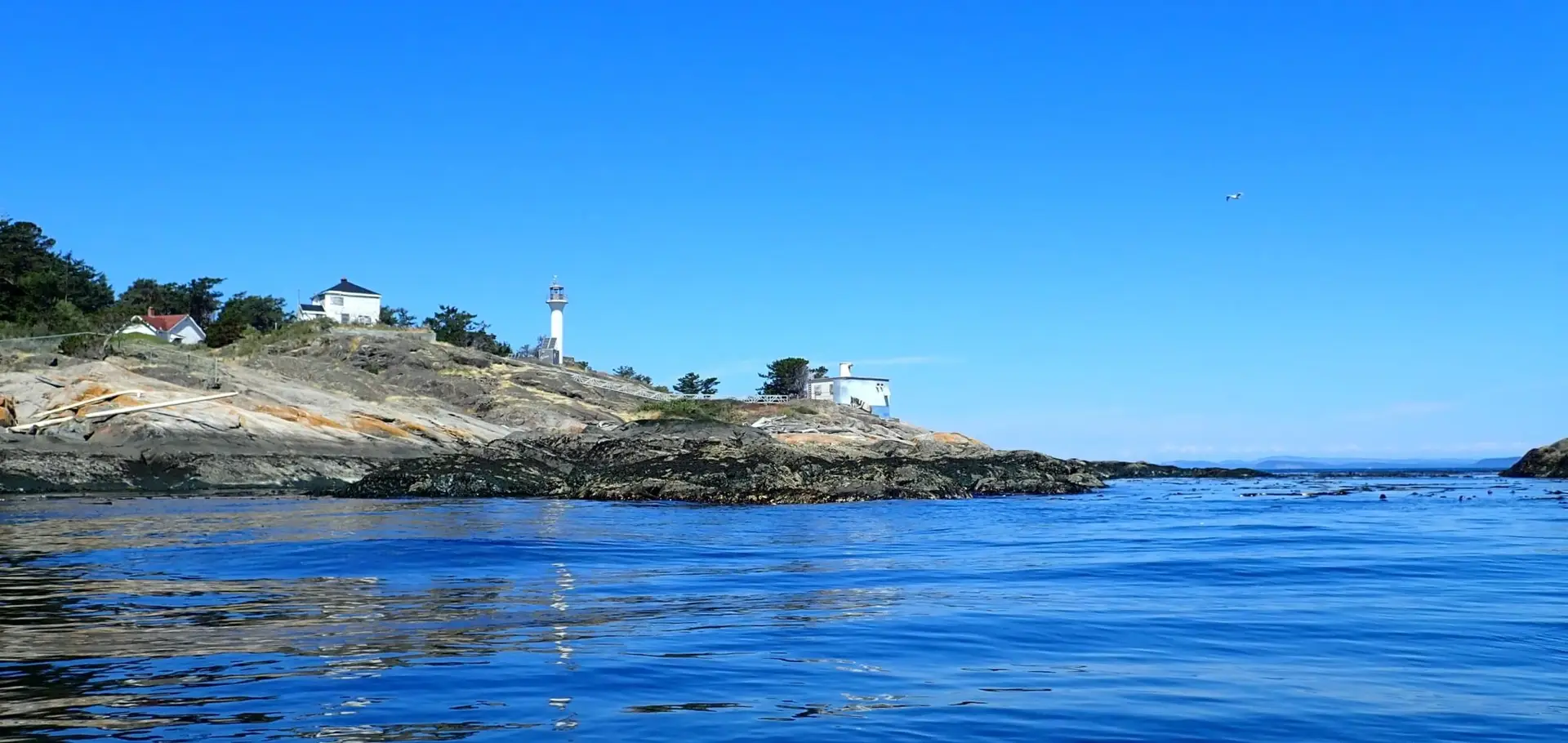
Songhees First Nations Rights and Title and Management
The Songhees practiced farming, which altered the local ecology. Sheep remained on the islands until a cull in the 1970s. The Chatham Island community continued until 1957, when the island’s well ran dry.
Today, several issues concern the Songhees First Nation. All lands apart from Discovery Island Provincial Park, in the Archipelago are either Songhees Indian Reserve, which is private with no public access, or Ecological Reserve which also has no access without a Permit.
Beach fires… After storms, the beaches often accumulate wood, which, combined with dry conditions in the summer, can create a fire hazard that poses a threat to adjacent forests and culturally important sites. Beach erosion is also a growing concern, as parts of the islands that were once dry land are now submerged.
Lagoon areas of Chatham Island have been identified as sensitive and significant to the Songhees First Nation, who have asked that visitation be restricted. These areas have been both harvesting and cultural bathing sites. The Songhees request does not create a prohibition but respecting Songhees concerns is respectful and contributes to the kayaking community efforts in citizen based reconciliation and responsible recreation.
Ecological restoration studies, plans and efforts have been pursued by Songhees and other allied parties for some time.
All areas of the islands except for Discovery Island Marine Provincial Park are designated as Indian Reserve lands, which are private lands held in common by the First Nation and its members. Boat landing is prohibited even below the high tide line. Signs indicating this restriction have been posted since about 2015.
Non-Indigenous harvesters are not permitted to collect food or any other materials from anywhere on the islands, including from Provincial Park land. This includes harvesting fruit, plants, wildlife, or any items of cultural significance. Violators may face hefty fines.
Seventy metres of airspace are under federal jurisdiction but Transport Canada permits the Songhees Nation to use drones for surveillance purposes.
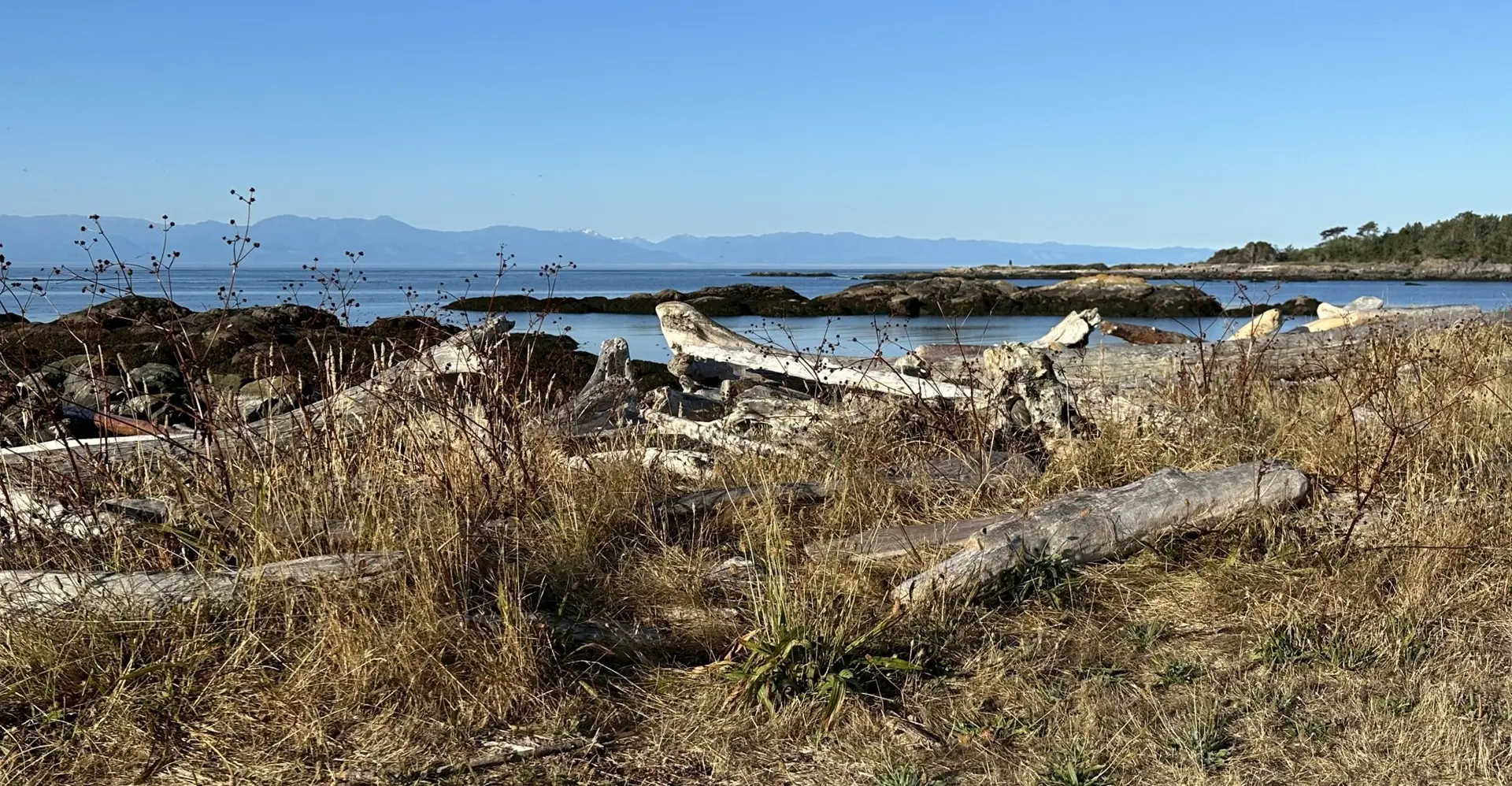
The Park in Rudlin Bay is the only land that is open to the public. Designated as a provincial park in 1972, the 61-hectare Discovery Island Marine Provincial Park was once the home of Captain E.G. Beaumont, who bequeathed it to British Columbia (except for a small portion of land now in private hands) after living there with his wife for nearly half a century.
There remains one, individually owned, private land parcel adjacent to the light house site.
As part of ongoing treaty and reconciliation efforts, the park will become a Public Treaty Settlement Land with continuing general use for recreation, including camping. South Island Sea Kayak Association (SISKA), Victoria Canoe and Kayak Club (VCKC) and BC Marine Trails have signed letters supporting the move.
The Park is presently open year-round, though fees are collected and services provided only between May 1st and September 30th. The park features gravel beaches, several walking and hiking trails, and beautiful woodlands of fir and arbutus trees. Visitors can hike up Pandora Hill for sweeping views of the surrounding region and the Olympic Mountains.
Bring your own water, as potable water is not available in the park. Due to the lack of firefighting equipment on the island, campfires are not allowed. Bring a portable stove for cooking. Stay on designated trails to protect sensitive meadows and ecosystems, and camp only in designated areas. Domestic animals are not allowed in the park.
Wildlife and Organisms
Kayaks are minimally invasive but the Fisheries and Oceans Canada guidelines state that water craft must keep 200 metres away from all orca (killer) whales in Pacific waters, and 200 metres for whale, dolphin and porpoise species with calves or in a resting position. Avoid approaching closer than 100 metres to marine and coastal wildlife including seals, sea lions, sea otters, coastal wolves, and bears.
If basking seals go into the water at your approach or if you flush birds from their resting places, you are too close. Such disturbances affect the individual animal’s energy balance and threaten their survival.
Try not to crush invertebrates underfoot or under the hull of your kayak. They have their own little lives to live undisturbed too.
Rockfish Conservation Areas
The entire archipelago, including Discovery Island, is part of the Rockfish Conservation Areas designated by Fisheries and Oceans Canada (Area 19, Chart 3462). Recreational fishers may not fish for any species by spearfishing, or groundfish by angling, salmon by trolling, jigging or mooching, octopus by angling, or squid by jigging.
And nearby…
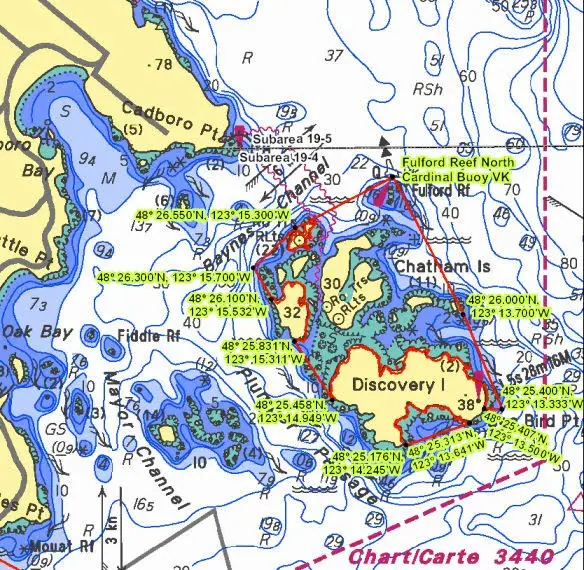
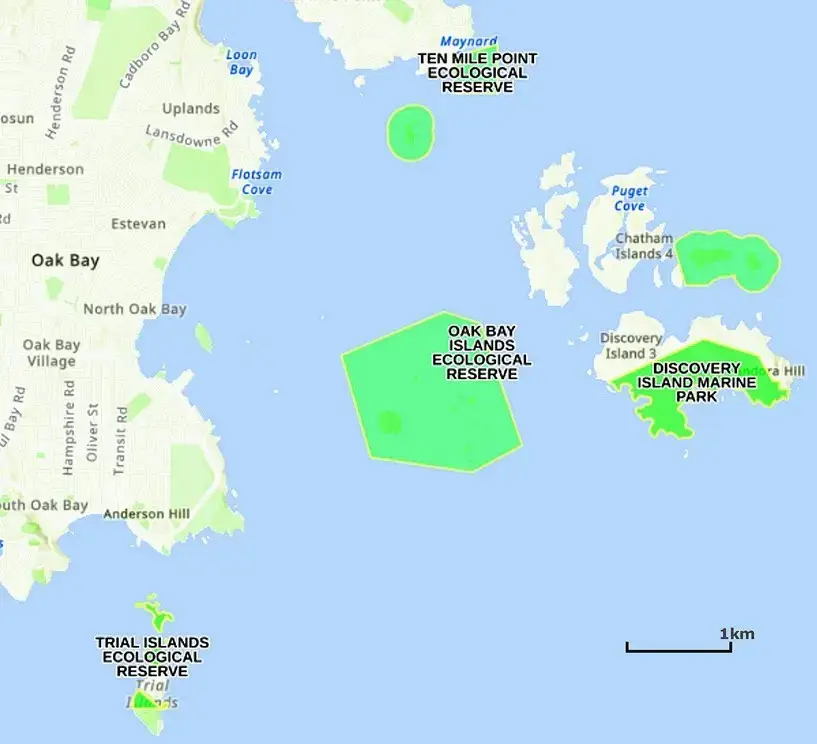
Oak Bay Islands Ecological Reserve
The Oak Bay Islands Ecological Reserve is a collection of islands, including Great Chain Islands, Jemmy Jones Island, Ten Mile Point, and Alpha Island east of Chatham. This ecological reserve was established to protect vulnerable seabird nesting sites, rare wildflowers, and marine habitats. The reserve is closed to the public to ensure the protection of its sensitive ecosystems.
Conclusion
It is essential that the high volume of paddlers in the waters around Chatham and Discovery Islands do not damage one of the most pristine and ecologically sensitive regions of British Columbia.
Please practice mindfulness of the Songhees’ aboriginal rights, the area’s fragile ecosystems, and the regulations in place to protect both. By following responsible paddling practices, we can help ensure that this magnificent place remains superb, intact and accessible.
